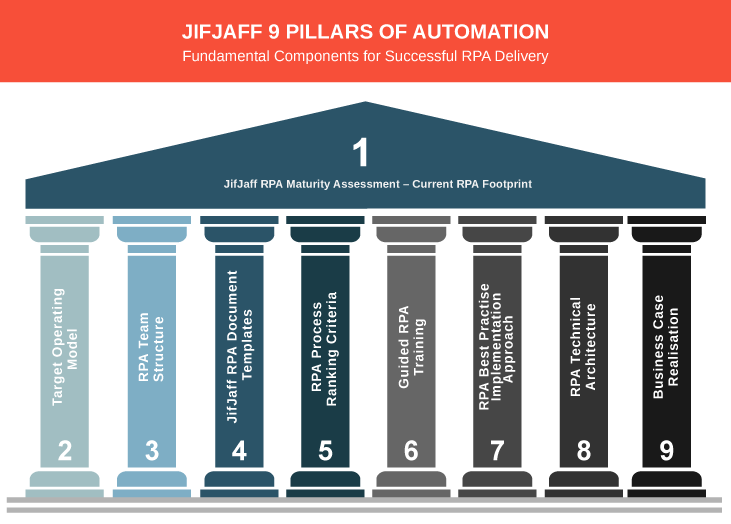RPA Best Practice Implementation Approach
JifJaff Nine Pillars of Automation: Pillar Seven: RPA Best Practice Implementation Approach
Learn more about how RPA Best Practice Implementation Approach forms a vital part of a solid Robotic Process Automation Centre of Excellence. This is the seventh pillar of our JifJaff Nine Pillars of Automation.
Learn more about the seventh pillar in our 9 pillars of automation: RPA Best Practice Implementation Approach
The “JifJaff Nine Pillars of Automation” facilitates successful Internal Robotic Process Automation (RPA) delivery through an internal Centre of Excellence (COE). This article is focused on Pillar Seven – RPA Best Practise Implementation Approach.
Implementing robotic process automation can follow a smooth path towards successful deployment and tangible benefits if best practice principles & milestones are followed.
To continue reading, please submit your details.
If you would like to enquire about our RPA and RPA COE implementation services, click here.
JifJaff 9 Pillars of Automation
Fundamental components for successful RPA delivery

JifJaff has a solid framework for RPA COE implementation. We believe in the 9 Pillars of Automation, and we take a structured approach to implementing your RPA setup:
4. JifJaff RPA Document Templates
5. RPA Process Ranking Criteria
7. RPA Best Practice Implementation Approach
8. RPA Technical Architecture
9. RPA Business Case Realisation
We offer each of these services individually, although we do offer the implementation of these as a full RPA COE implementation service.
Contact us to find out how you we can help you successfully manage your RPA COE implementation.
